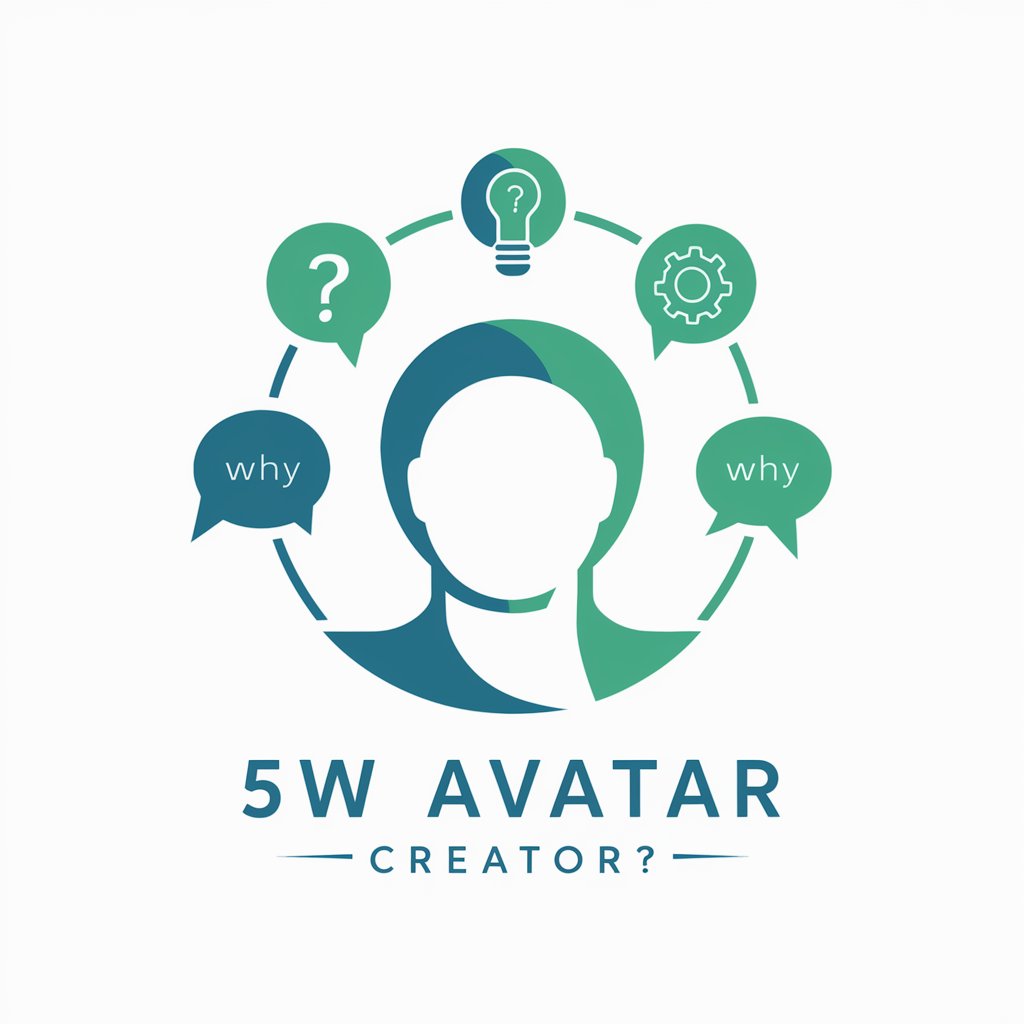
Buyer Persona - Detailed Customer Insights

Hello, let's start creating your Buyer Persona!
Empower Your Strategy with AI-Driven Customer Insights
Describe your ideal customer's daily routine and key responsibilities.
What are the main challenges your target customer faces in their industry?
Identify the primary goals and motivations of your target audience.
What factors most influence your customer’s purchasing decisions?
Get Embed Code
Understanding Buyer Persona
A Buyer Persona represents a semi-fictional character that embodies the characteristics of a business's ideal customer, based on market research and real data about existing customers. These personas help businesses understand and empathize with their target audience, allowing for more targeted marketing strategies, product development, and services. For example, a technology company might create a Buyer Persona named 'Tech-Savvy Tim,' a middle-aged professional who values cutting-edge technology to boost productivity. This persona helps the company tailor its marketing messages, product features, and support services to attract individuals similar to Tim. Powered by ChatGPT-4o。

Key Functions of Buyer Persona Services
Market Segmentation
Example
Dividing a market into distinct groups of buyers who have different needs, characteristics, or behaviors, and who might require separate products or marketing strategies.
Scenario
A fashion retail brand creates personas for 'Trendy Tina,' who is interested in the latest fashion trends, and 'Eco-Friendly Eva,' who prefers sustainable and ethically made clothing. This segmentation allows for personalized marketing campaigns.
Enhanced Customer Understanding
Example
Gaining insights into customer preferences, pain points, and purchasing behavior.
Scenario
A software company develops a persona named 'Entrepreneur Eric,' a small business owner looking for efficient and cost-effective software solutions. This understanding guides the company in developing features that address Eric's specific needs and challenges.
Improved Product Development
Example
Using personas to guide the development of products or services that meet the specific needs of the target market.
Scenario
A health food company creates a persona named 'Healthy Helen,' who is very health-conscious and looks for nutritious, convenient food options. This persona helps the company in formulating new health food products that appeal to Helen and similar customers.
Tailored Marketing Strategies
Example
Creating marketing messages and campaigns that resonate with the specific interests, needs, and behaviors of different personas.
Scenario
An online education platform develops a persona named 'Lifelong Learner Larry,' who is always looking to acquire new skills for personal growth. The platform uses this persona to design targeted ads and course recommendations.
Who Benefits from Buyer Persona Services
Marketing Professionals
Marketing teams across industries can use buyer personas to craft targeted marketing strategies, create relevant content, and effectively distribute resources to engage their ideal customers.
Product Managers
Product managers utilize buyer personas to align product development with the needs and expectations of their target market, ensuring that new features and products are likely to satisfy and delight their intended users.
Sales Teams
Sales professionals benefit from understanding buyer personas by tailoring their sales pitches and strategies to address the specific interests and pain points of potential customers, thereby improving conversion rates.
Content Creators and Copywriters
Writers and content creators use buyer personas to produce compelling, relevant content that speaks directly to the interests, needs, and challenges of their audience, increasing engagement and loyalty.
UX/UI Designers
Designers rely on buyer personas to create user interfaces and experiences that resonate with the target audience, ensuring that products are user-friendly and meet the expectations of their users.

How to Use Buyer Persona
1
Start by visiting yeschat.ai for a complimentary trial, accessible without the need for login or ChatGPT Plus.
2
Define the target market or customer segment for which you want to create the Buyer Persona by gathering data about customer demographics, behavior, and preferences.
3
Utilize the provided question framework to systematically gather and document specific information about your Buyer Persona, including personal details, goals, challenges, and decision-making factors.
4
Analyze the collected data to identify patterns and insights. Use these to tailor marketing strategies, product development, and customer service to meet the unique needs of your target audience.
5
Regularly review and update your Buyer Persona to reflect changes in the market or customer behavior, ensuring that your strategies remain relevant and effective.
Try other advanced and practical GPTs
" Takuta Kai "
Empowering Your Health with AI

Thomas' Prompt Engineer
Crafting Precise AI Prompts, Powered by AI

K-Weather GPT
AI-Powered Weather Insights for South Korea

Paper-KC-GPT
Elevate Your Writing with AI

吉田先生(教育理念・取り組み)
Empowering Education with AI Insights

伊藤先生(数学)
Empowering math learning with AI

Bootcamp-Buddy
Empowering AI Integration in Banking

Fahrschule GPT
Master Driving Theory with AI

Avery Itzak
Empowering Strategies with AI Insight

KL Transalre
Bridging Business Communications with AI-Powered Local Insights

Visual Pedestrian Pathfinder
Explore walks with AI-crafted visuals

كرة القدم
AI-powered insights into the soccer world.

Frequently Asked Questions about Buyer Persona
What is a Buyer Persona?
A Buyer Persona is a semi-fictional representation of your ideal customer based on market research and real data about your existing customers. It helps in understanding the target audience's needs, behaviors, and decision-making processes.
How often should I update my Buyer Persona?
It's recommended to review and update your Buyer Persona periodically, especially when you notice significant changes in customer behavior, market trends, or after launching a new product or service.
Can I have multiple Buyer Personas?
Yes, most businesses have multiple Buyer Personas to represent different segments of their target market, catering to the varied needs and preferences of each group.
How detailed should a Buyer Persona be?
A Buyer Persona should be as detailed as possible, including demographics, behavior patterns, motivations, goals, and pain points, to create a comprehensive profile that guides your marketing and product strategies.
What are the common mistakes to avoid when creating a Buyer Persona?
Common mistakes include relying on too much assumption without data, creating too many personas which can dilute focus, and not updating personas regularly to reflect changes in the market or customer behavior.





